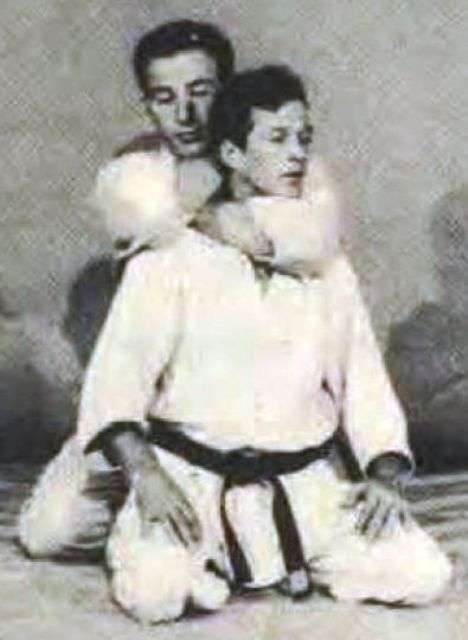Atheist philosopher Quentin Smith comments:
According to the Copenhagen Interpretation, the wave function needs to be collapsed by something outside the system being measured. The wave function of the universe, accordingly, needs to be collapsed by something outside the universe. Now most versions of the Copenhagen Interpretation regard the observer (often explicitly identified with consciousness) as what collapses the wave function. In this respect, the cosmological application of the Copenhagen Interpretation may reasonably be thought to posit God (or a disembodied person who has superhuman attributes) outside the universe. Indeed, it seems to be the best scientific argument for God which is present in the twentieth century science. (Theism, Atheism and the Big Bang Cosmology, p. 325. Emphasis in blue added).
According to the Copenhagen Interpretation, the wave function needs to be collapsed by something outside the system being measured. The wave function of the universe, accordingly, needs to be collapsed by something outside the universe. Now most versions of the Copenhagen Interpretation regard the observer (often explicitly identified with consciousness) as what collapses the wave function. In this respect, the cosmological application of the Copenhagen Interpretation may reasonably be thought to posit God (or a disembodied person who has superhuman attributes) outside the universe. Indeed, it seems to be the best scientific argument for God which is present in the twentieth century science. (Theism, Atheism and the Big Bang Cosmology, p. 325. Emphasis in blue added).
Smith's argument (or rather, a modified version of it) could be summarized (and suplemented) like this:
1) If the Copenhagen interpretation of QM is true, the wave function of any physical system needs to be collapsed by an external conscious (intentional) observer.
2)The Copenhagen interpretation of QM is (probably) true
3)Therefore, the wave function of any physical system needs to be collapsed by an external conscious (intentional) observer
4)The physical universe as a whole is a physical system.
3)Therefore, the wave function of any physical system needs to be collapsed by an external conscious (intentional) observer
4)The physical universe as a whole is a physical system.
5)Therefore, the wave function of the universe needs to be collapsed by an external conscious (intentional) observer.
(You can substitute the Copenhagen interpretation by any other which implies the need of the wave function being reduced by a concious observer, and the argument runs alike).
(You can substitute the Copenhagen interpretation by any other which implies the need of the wave function being reduced by a concious observer, and the argument runs alike).
The inmediate implication is that the universe has a trascendent cause. This suffices to destroy metaphysical naturalism (which conceives everything that exists as co-extensive with the physical world and explicitly denies any kind of non-physical causation).
Since we are considering the wave function of the entire physical universe (not just apart of it), and the observer in question is outside the physical universe, it follows that the observer in question is NON-PHYSICAL. Hence, it doesn't have the attributes of temporality or spaciality (which are part of the physical universe). Therefore, the observer in question is TIMELESS (outside of time = permanent = eternal) and SPACELESS.
The observer in question is CONSCIOUS, but the mere existence of consciousness by itself seems to be incapable of causing the reduction of the wave function (because, if consciousness is eternal and were sufficient to bring about the reduction of the wave function, then universe would be eternal too since its wave function had been collaped an infinite time ago co-eternal with consciousness, which it is not the case as proved by the evidence for the absolute beginning of the universe at the Big Bang). As Henry Stapp and other physicists (and philosophers of science like J.P.Moreland or William Lane Craig) suggest, in addition to mere consciousness, it is needed an INTENTION (freely exercised) to bring about the reduction of the wave function.
Therefore, the observer in question is conscious, free and intentional, which are essential and distintive features of persons. Hence, the observer in question is plausibly personal.
As Smith realizes, all of these attributes of the observer of the universe are precisely the attributes commonly conceived of God, namely, a non-physical, timeless, spaceless, eternal, free, personal (conscious and intentional) being who consciously and intentionally brings about the universe a finite time ago. Whatever more can one say about God, these attributes are certainly essential to God.
At first glance, this argument seems compatible with a plurality of observers as being the causes of the universe (e.g. a bunch of spiritual observers agreed to create the universe, a view defended for example by Ron Hubbard). But by Occam's Razor, postulating one single cause is simpler than postulating an arbitrary number of causes and since a single cause suffices to produce the effect, in this case wave function reduction, a plurality of causes seem to be ad hoc and hence less plausible (leaving aside the fact that a plurality of causes seem to be supporting a kind of polytheism, that is, the worldview which is rooted in bunch of mini-gods, which in certain New Age circles, which are extremely ego-centred, arrogant, prone to wild fantasies about "your mind creates everything" and not critically aware of human limitations, such mini-gods are identified with... ourselves).
At first glance, this argument seems compatible with a plurality of observers as being the causes of the universe (e.g. a bunch of spiritual observers agreed to create the universe, a view defended for example by Ron Hubbard). But by Occam's Razor, postulating one single cause is simpler than postulating an arbitrary number of causes and since a single cause suffices to produce the effect, in this case wave function reduction, a plurality of causes seem to be ad hoc and hence less plausible (leaving aside the fact that a plurality of causes seem to be supporting a kind of polytheism, that is, the worldview which is rooted in bunch of mini-gods, which in certain New Age circles, which are extremely ego-centred, arrogant, prone to wild fantasies about "your mind creates everything" and not critically aware of human limitations, such mini-gods are identified with... ourselves).
Smith's insight implies that, if one accepts the Copenhagen interpretation of QM, then ones is (or should be) strongly pushed in the direction of theism (at least, as a more plausible candidate than naturalism, since the latter cannot account for nor accept the external, non-physical personal cause of the universe. And other candidates like pantheism or polytheism seem to be even more inadequate and objectionable than theism or naturalism).
Note that this argument applies to any interpretation of QM which postulates an external observer (or consciousness) as the only cause of the reduction of the wave function.
It seems to me that all the versions of pantheism (which identifies God with physical nature, namely a God inherent in nature) are refuted by this argument too.
Also, all the worldviews which are impersonalistic (like some commonly found on Eastern philosophies) cannot accout for such personal cause either, since such personal cause is basic, not derivative (and causally senior regarding the universe).
This argument seems to me impeccable, with the exception that it is not clear that the Copenhagen interpretation of QM is true. I personally have doubts about such interpretation. As I've mentioned before, there are around of 10 different interpretations of QM, some of which seem to imply that "observation" is sufficient, but not necessary, for the collapse of the wave function.
For this reason, I don't think it is a compelling argument for God's existence (except if one accepts the Copenhagen interpretation of QM, or any other version which postulates consciousness as necessary condition for the reduction of the wave function, as the best interpretation).
Just for the record: Quentin Smith is an atheist, and hence he doesn't accept this nor any other argument for God's existence. Moreover, it is hard to see what argument would convince him, since in the same book he says: "The fact of the matter is that the most reasonable belief is that we came from nothing, by nothing and for nothing... We should instead acknowledge our foundation in nothingness and feel awe at the marvellous fact that we have a chance to participate briefly in this incredible sunburst that interrupts without reason the reign of non-being ." (Theism, Atheism and the Big Bang Comsology. P.135. emphasis in blue added)".
If nothingness is a better explanation than God, then it is hard to see what evidence for God he would accept, since any possible evidence could be explained as caused by "nothingness" too. (See discussion of this latter view of Smith here).











